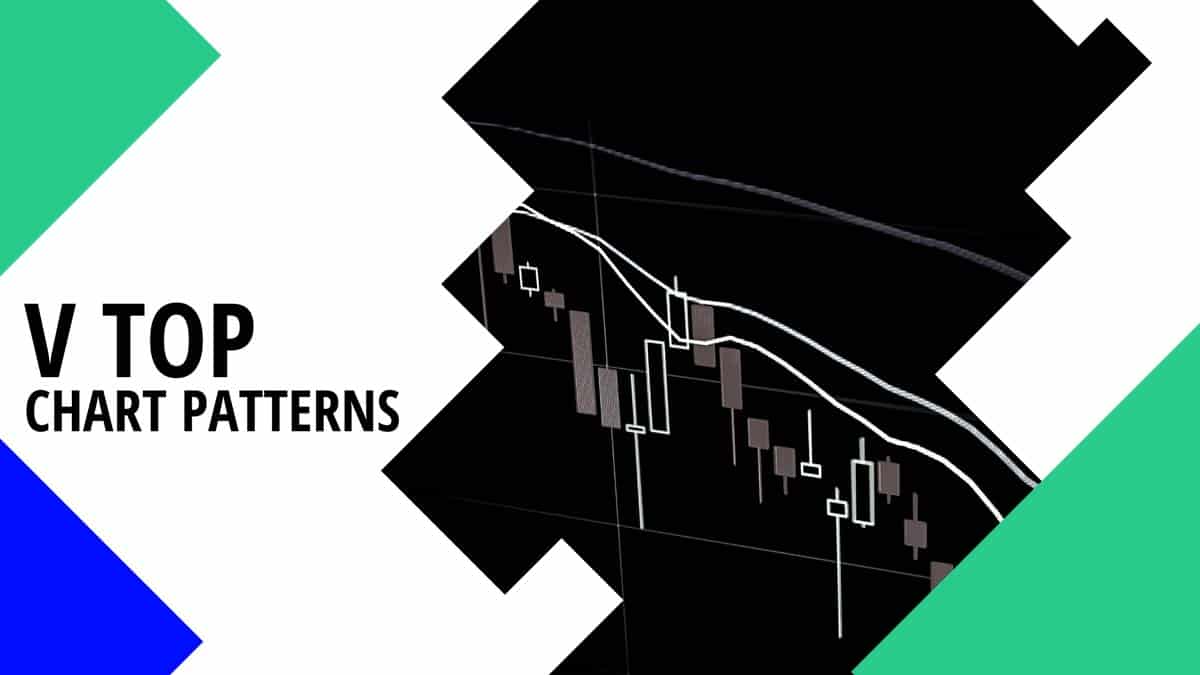What is V Top Chart Pattern?
The V-top derives its name from the inverted V-shaped pattern. It comes up when price momentum changes from an aggressive purchase to an aggressive selling state.
This formation is a powerful bearish reversal chart pattern and shows up in all markets and time periods. As a result of the quick sell-off that follows, figuring out this formation can be hard not until you’ve found a way to complete it.
In a V-top chart, price trades higher and instantly reverses lower with a huge increase in momentum. It is extremely difficult to forecast v-tops, however, the majority of the investors would exercise patience for a price to break the resistance of the formation.
After which they take a short position as soon as the price retests the resistance line. Although, the sell-off can sometimes be strong that there won’t be a retest of the resistance line. Hence, it is advisable to not try to chase the market.
Early signs that a v-top pattern is forming would be the appearance of 1 – 3 bar reversal followed by an addition in volume. This takes place amidst the upswing and the present downswing.
What makes this pattern occur is that traders’ irrationality results in an unexpected jolt in the price and then a retracement of the short trend. Hence, v tops frequently occur in short trends and indicate reversals.
There are numerous approaches to trading v-top. However, the most conservative means is to wait for a break and close below the resistance level. You can also try a short immediately the price returns to the resistance level and gets a decline signal.
You can set a reasonable target beneath the price by calculating the same length from the top of the formation to the low resistance level. When the price closed beneath the resistance level, there was a tad pullback to the resistance level before the price further sold off.
Factors that makes identifying a v-top pattern possible
- The topmost point of an inverted v is usually formed by a single candlestick. Usually with a huge high wick, showing a trader’s interest for a reversal.
- A relly steep bullish trend line controls the rapid bullish movement that makes up the inverted v. The price barely make a pause in the process of the movement.
- There must be a close similarity between the angle of the bearish line that leads to the bearish reversal and the angle of the bullish line leading to the bullish movement.
Trading strategies with V-Tops
The traditional strategy:
Entry: open a bearish position at the break of the resistance level
Stop loss: you can insert the stop loss beyond the resistance level
Objective: the theoretical objective of the formation
Advantage: the short movement most times continues after the break in the resistance level
Disadvantage: It is hard to put a stop to loss rightly because the only genuine final topmost point is the one above the V top
The aggression Strategy:
Entry: open a bullish position if the angle on the short line that controls the short movement appears to be similar to the angle of the bullish line that drove the short movement.
Stop loss: you can insert the stop beneath the final topmost one
Objective: revert to the resistance level
Advantage: the increment can be very rapid
Limitation: the pattern is not yet affirmed and the long movement following the V top’s low point could be a basic adjustment.
Conclusion
- It can be quite difficult to anticipate a v-top
- The interest of its formation rest on its ability to reverse the trend
- V-top patterns usually show up in a channel

 Good Trading requires the Best Charting Tool!
Good Trading requires the Best Charting Tool!

 We loved Marwood Research’s course “Candlestick Analysis For Professional Traders“. Do you want to follow a great video course and deep dive into 26 candlestick patterns (and compare their success rates)? Then make sure to check this course!
We loved Marwood Research’s course “Candlestick Analysis For Professional Traders“. Do you want to follow a great video course and deep dive into 26 candlestick patterns (and compare their success rates)? Then make sure to check this course!